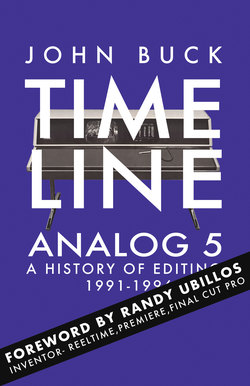Читать книгу Timeline Analog 5 - John Buck - Страница 11
На сайте Литреса книга снята с продажи.
NUBUS or HBUS
ОглавлениеSuperMac, Radius, RasterOps, and others competed to sell hardware that extended the capability of Apple's computers. With near saturation in monitors and graphics cards sales, they had shifted focus turned to desktop video and video cards.
But there was an immediate technology bottleneck. Bandwidth.
Ben Jamison, Radius product manager told MacWorld:
One reason the multimedia market has not taken off as some predicted is that video has proven itself an extremely difficult and expensive data type to deal with.
Apple then went public with what appeared to be a way to solve part of the multimedia bottleneck.
Lexington, or Touchstone as it was to be called on release, was a combination of a new architecture, new system software and new hardware that let a Macintosh computer ingest, process and output a video signal to scalable video windows and flicker-free 24-bit signal to composite video.
It was hoped Touchstone could be combined with Apple’s upcoming QuickTime system extensions to make digital video more versatile to use and less expensive to produce.
Apple pushed the narrative:
Today, users can pass video across the NuBus, or the Macintosh motherboard, and display it on the monitor using a video card. A video window of 640x480 lines at 30 frames per second is the limit of what the NuBus can handle. Therefore, to manipulate the video in any way such as compressing it and storing it on a hard drive in real time a user would be required to reduce the resolution, make the window smaller or cut the number of frames being displayed.
The engineers had achieved a way to increase the quality of the video image as it was run through image enhancement, compression, digitizing and resizing. The eight subsequent Touchstone patents included work on Apple-designed custom chips and a new architecture called HBus (H stood for high performance).
HBus moved video traffic off NuBus. High bandwidth video information was processed quickly without slowing concurrent operations of the computer.
Touchstone technologies are not necessarily dedicated to one product, a single “super video” card, but will be used in a wide variety of products in different combinations over the coming months and years.
Additional processors or dedicated daughter boards could be connected through an HBus slot which would sit on the NuBus cards. In a significant move, Apple announced that it was to license Touchstone to third parties rather than keep it in-house.
The decision appeared to signal a move away from hardware compression to a software approach like QuickTime. Spokesperson Patty Tulloch:
Apple is concentrating on system software and platform development, and has chosen to offload resource-intensive NuBus development projects to those third parties that have more incentive to bring them to market.
CEO Barry James Folsom of monitor maker Radius saw:
...Touchstone as the “universal common denominator for multimedia developers”.
Radius planned to produce 24-bit Touchstone style multimedia boards capable of capturing and outputting 30 fps video with support for 16.7 million colors.
